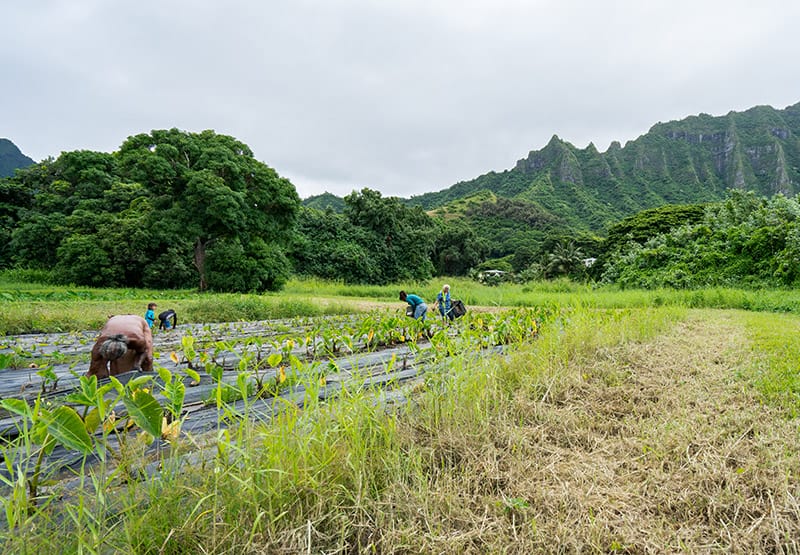Hakipu’u Lo’i Kalo (wetland taro farm)

Oʻahu’s lush Hakipuʻu Valley was once overseen by Hawaiʻi’s kahuna (priestly class), and is revered to this day for its traditional navigators. The fertile makai (oceanside) flats are home to the valley’s only loʻi kalo (wetland taro fields) in cultivation since ancient times. Native Hawaiian farmers still use traditional methods extending back many generations to farm the taro here. The loʻi kalo provide a rich wetland ecosystem that supports native plants and animals including pinao (Hawaiian dragonfly), ʻaukuʻu (black-crowned night heron), and ʻoʻopu (goby fish).
We worked in partnership with the Hakipu‘u community to protect these loʻi kalo – even temporarily purchasing and holding the land in 2016 while leading the effort to raise $1 million in public funds to protect this land. In 2020, we in partnership with Hoʻāla ‘Āina Kūpono, the Hakipu‘u community, the Fukumitsu ‘ohana, Hawaiian Islands Land Trust, the City and County of Honolulu’s Clean Water and Natural Lands Program, and the State of Hawai‘i’s Legacy Land Conservation Program forever protected Hakipuʻu Loʻi Kalo from development. The land will remain a kalo farm and serve as an outdoor classroom where students can learn about regenerative agriculture, watershed and natural resource management, a living Hawaiian culture, and aloha ‘āina values. These loʻi kalo will now be stewarded by the community through ownership by community nonprofit, Hoʻāla ʻᾹina Kūpono. The City & County of Honolulu and Hawaiian Islands Land Trust co-hold a conservation easement that restricts the land to farming, education, and community use.

